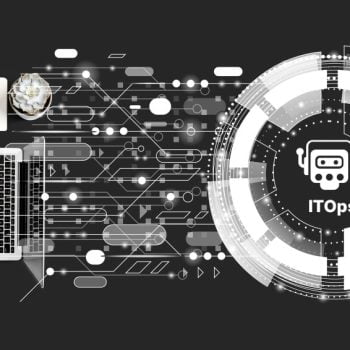Network management ensures optimal network operation, maintenance, and administration through various activities and protocols. A key element is configuration management, which involves the detailed recording and updating of information related to an enterprise’s hardware and software, such as network addresses, firmware versions, and software configurations. This process is crucial for maintaining system organization, documentation, and stability, reducing errors, and minimizing downtime. This blog explores how configuration management significantly enhances network security, compliance, reliability, and scalability.
Related blog: A Ten-Point Guide to Selecting the Right Network Configuration Management Tool
Understanding Configuration Management
Configuration Management (CM) is a systematic process used to maintain consistency of a product’s performance, functional, and physical attributes with requirements, design, and operational information throughout its life.
Objectives of Configuration Management
The primary objectives of configuration management within a network environment include:
- Consistency: Ensuring all network settings and configurations are consistent across similar devices and systems.
- Control: Maintaining control over network components to manage changes and ensure only authorized modifications are made to the system.
- Efficiency: Enhancing network efficiency by automating the tasks involved in managing configurations, thus reducing manual labor and the possibility of human error.
- Compliance and Security: Ensuring network configurations comply with internal policies and external regulatory requirements. It helps maintain security by managing vulnerabilities and promptly applying necessary patches or updates.
- Accountability: Tracking changes and maintaining a record of modifications to help troubleshoot issues and assess their impact.
Critical Components of Configuration Management
Configuration management is crucial in network management and includes essential components:
- Hardware: Involves managing physical devices like routers, switches, and firewalls by tracking model and serial numbers, and hardware specifications to ensure compatibility and maintain inventory.
- Software: Focuses on monitoring software versions and configurations across network devices, managing updates, and ensuring devices run appropriate versions of operating systems and applications to prevent conflicts and vulnerabilities.
- Network Settings: Includes managing and standardizing network protocols, services, IP addresses, network masks, and routing configurations to optimize network performance and improve security and resilience.
- Documentation: Maintains accurate and current records of all configurations and settings, vital for disaster recovery, audits, and troubleshooting.
- Change Management: Evaluates, approves, and documents network changes within the broader configuration management framework to minimize disruption and maintain continuous operation.
Configuration management (CM) covers everything from the initial deployment and setup to the ongoing maintenance and eventual decommissioning of network components. It ensures that all aspects of the network’s operations are controlled and predictable, minimizing downtime and upholding service quality. CM integrates with other management areas, such as network performance and security management, to offer a holistic approach to network administration.
Effective CM helps foresee changes’ impacts, automates repetitive tasks, and provides a structured method for securely and efficiently scaling network operations. Implementing robust configuration management enables organizations to enhance contemporary business activities and services.
Key Processes in Configuration Management
The four key processes that form the backbone of effective configuration management include Configuration Identification, Configuration Control, Configuration Status Accounting, and Configuration Audits.
Configuration Identification
This process involves identifying and defining the configuration items (CIs) that comprise the network. CIs can include servers, routers, switches, and software applications—essentially, any component that requires management and maintenance. Each item is cataloged with detailed information such as version number, location, and interdependencies. Proper identification is crucial as it sets the foundation for all other configuration management activities, enabling precise control and accurate tracking.
Configuration Control
Any CI alteration, whether a software update or hardware replacement, goes through a standardized change management process. It includes evaluating the potential impact of changes, seeking necessary approvals, and documenting the change process. Effective configuration control prevents unauthorized modifications and helps maintain the stability and integrity of the network.
Configuration Status Accounting
The ongoing process of recording and reporting the current status and history of changes in CIs provides network managers with a comprehensive view of all CIs, their configurations, and historical changes. Accurate records are vital for troubleshooting issues, planning further changes, and ensuring compliance with internal and external regulations. The data collected supports other management activities, including performance monitoring and security management.
Configuration Audits
Regular checks assess the accuracy of the configuration management database (CMDB) and ensure that the actual network state aligns with documented records. Audits help identify discrepancies or deviations, which could indicate unauthorized changes or errors in documentation. Regular auditing guarantees that the network remains configured correctly and functions as expected, reducing downtime and security risks.
Tools and Technologies in Configuration Management
The tools and technologies employed for configuration management play a pivotal role in maintaining network environments’ health, performance, and security.
Common Tools for Configuration Management
- Ansible: Ansible is an open-source tool and effective in configuration management, application deployment, and task automation. It automates server setups, manages configurations, and handles complex workflows without requiring any software installation on the nodes it manages, thus reducing deployment and maintenance efforts.
- Chef: Chef is an open-source tool adept at managing complex deployments in various environments, including physical, virtual, and cloud. It operates on a master-agent model with a central Chef server that oversees nodes with installed agents, supporting version control and automated testing for reliability and consistency.
- Puppet: Puppet offers strong configuration management through a master-agent setup. The central Puppet Master administers configurations to nodes with installed Puppet agents and allows administrators to specify the desired state of their infrastructure, ensuring systems align with these specifications.
The Role of Automation in CM
Automation is pivotal in modern configuration management, revolutionizing network management through several key benefits:
- Efficiency and Speed: Automation accelerates the deployment of new settings and updates across numerous devices and servers, which is essential for maintaining business agility and minimizing downtime.
- Consistency and Accuracy: By reducing human error, automation ensures configurations are applied uniformly and accurately, decreasing risks of security breaches and service disruptions.
- Scalability: Manual configuration management becomes unfeasible as networks expand. Automation effortlessly scales, maintaining consistent settings and policies across thousands of devices.
- Compliance and Security: Automation continuously enforces compliance with standards and policies, quickly addressing vulnerabilities with updates, thus bolstering network security.
- Cost Reduction: Although initial setup costs exist, automation ultimately lowers labor costs and reduces financial losses related to downtime from configuration mistakes.
Automation enhances configuration management effectiveness and aligns network management with the needs of modern digital enterprises.
Related blog: Must-Have Features of Endpoint Management Software
Conclusion
The role of configuration management in network management is both foundational and transformative. By meticulously managing every aspect of the network’s configuration, organizations can achieve higher efficiency, security, and stability—increasingly vital attributes in today’s digital landscape. Undoubtedly, effective configuration management preserves the integrity and performance of a network and enhances its resilience against disruptions and security threats.
Moreover, automation integration within CM processes extends these benefits, facilitating rapid deployment, meticulous compliance, and robust scalability. As networks evolve in complexity and scale, the strategic implementation of configuration management will remain essential in enabling businesses to meet their operational demands and strategic objectives efficiently.



















